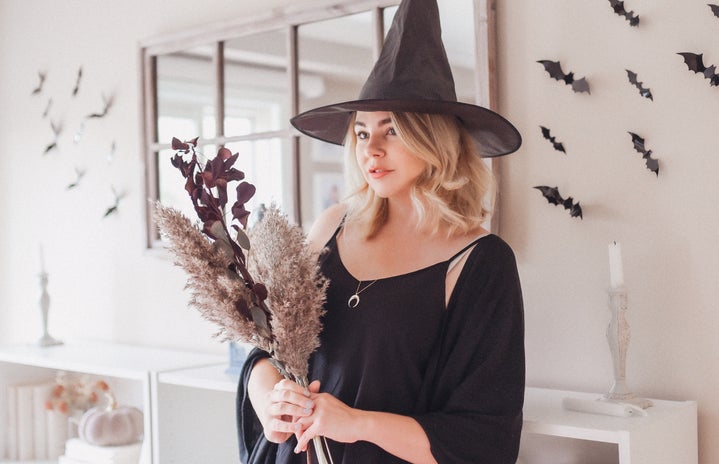In a sleepy town called Salem, Massachusetts in the year 1692, Tituba, an enslaved woman of color, was one of the first women to be accused of witchcraft. She was owned by Samuel Parris. Not much is known about her life. Tituba’s story is one of conflicting accounts and missing context. Nonetheless, what is known and what has been recorded is that she was labeled a witch because she supposedly performed voodoo and taught fortune-telling to the Salem Village girls.
She came from Africa and most likely had Indigenous roots. She likely used to tell the Parris children she cared for things about voodoo and folklore that others at the time thought made her a “detestable witch.” The Parris children began to have fits, which included severe contortions and unrestrained screams. With no proof to back up her claims, she confessed to the crime, claiming that the devil appeared to her several times and forced her to do such things and that she had seen “two rats: a red rat and a black rat,” as she told the magistrates. “They ‘said serve me.’”
Tituba admitted to pinching the Parris girls and told the court she had signed a “devil’s book.” According to many sources, including Tituba, she was compelled to confess after being beaten by Parris. Tituba, due to her lesser social rank as property and limited monetary resources, undoubtedly realized this was her only chance at saving herself, and it worked. Tituba’s story became the first of many convenient accusations that served to oppress culturally and socially different women.
Witchcraft accusations are frequently linked to cultural differences. In a fairly homogeneous Puritan culture like Salem, those deemed to be different, whether because of cultural customs, origins, or beliefs, were more vulnerable to accusations. Most of the accused witches were marginalized by economic or social hardships. Race and ethnicity may have interacted with social standing, making some people more open to charges.
Along with Tituba, two other women, Sarah Good and Sarah Osborne, were charged. Good was a destitute pregnant beggar. Osborne was bedridden and accused of having committed fornication with her indentured servant and seized her late husband’s assets, which he had willed to his sons. These actions broke social norms.
Tituba, Good, and Osborne all had some sort of power disadvantage that caused them to deviate from social norms. Most people who were accused of witchcraft had some kind of grievance that made them palatable targets.
17-year-old Elizabeth Hubbard was an orphan who worked as a maid for her aunt, Rachel Griggs. Rachel’s husband, William Griggs, was a physician who initially treated the affected girls in the Parris home. Hubbard became one of the first few accusers in the Salem witch trials, testifying against 29 individuals, 13 of whom were put to death.
Two other accusers who played a key role in the Salem witch trials were Mercy Lewis, a 19-year-old orphan, who lived in Salem Village as a servant in the home of Thomas and Ann Putnam. 16-year-old Mary Walcott was a Putnam family member through marriage. The Walcotts lived next door to the Parrises.
If you follow my drift, there’s a pattern here. The accused typically came from a background that set them apart from the accusers in terms of economic status, social standing, and hierarchical standing. The accusers were frequently well-known families. There were 20 confirmed deaths during the Salem Witch Trials. In addition, four inmates passed away in jail before their trials. During the witch hunt, 200 people were accused of witchcraft, and 140 and 150 of them were taken into custody.
The trials took place in a society where religion was central. Fear of the unknown, as well as belief in supernatural forces, contributed to an atmosphere of anxiety and suspicion. Those charged were almost entirely marginalized people with economic, gender, and age disadvantages, as well as mental or physical conditions that rendered them “inferior” to those in power. Because of social prejudices against these groups, they were more vulnerable to accusations. In fact, the last “witch” convicted for witchcraft, Elizabeth Johnston Jr., was not officially cleared until 2022, 329 years later.
The Salem Witch Trials are an important part of women’s history because of their connections to feminism, prejudices, and power imbalances. The Puritans’ intolerant, power-hungry society allowed accusations of witchcraft to be weaponized as a means of eliminating marginalized women who deviated from the norm. While many women today have reclaimed the title of “witch” as a positive one, the Salem Witch Trials serve as a frightening reminder of the power that mass hysteria and groupthink possess.
Want to see more HCFSU? Be sure to like us on Facebook and follow us on Instagram, Twitter, TikTok, and Pinterest!


